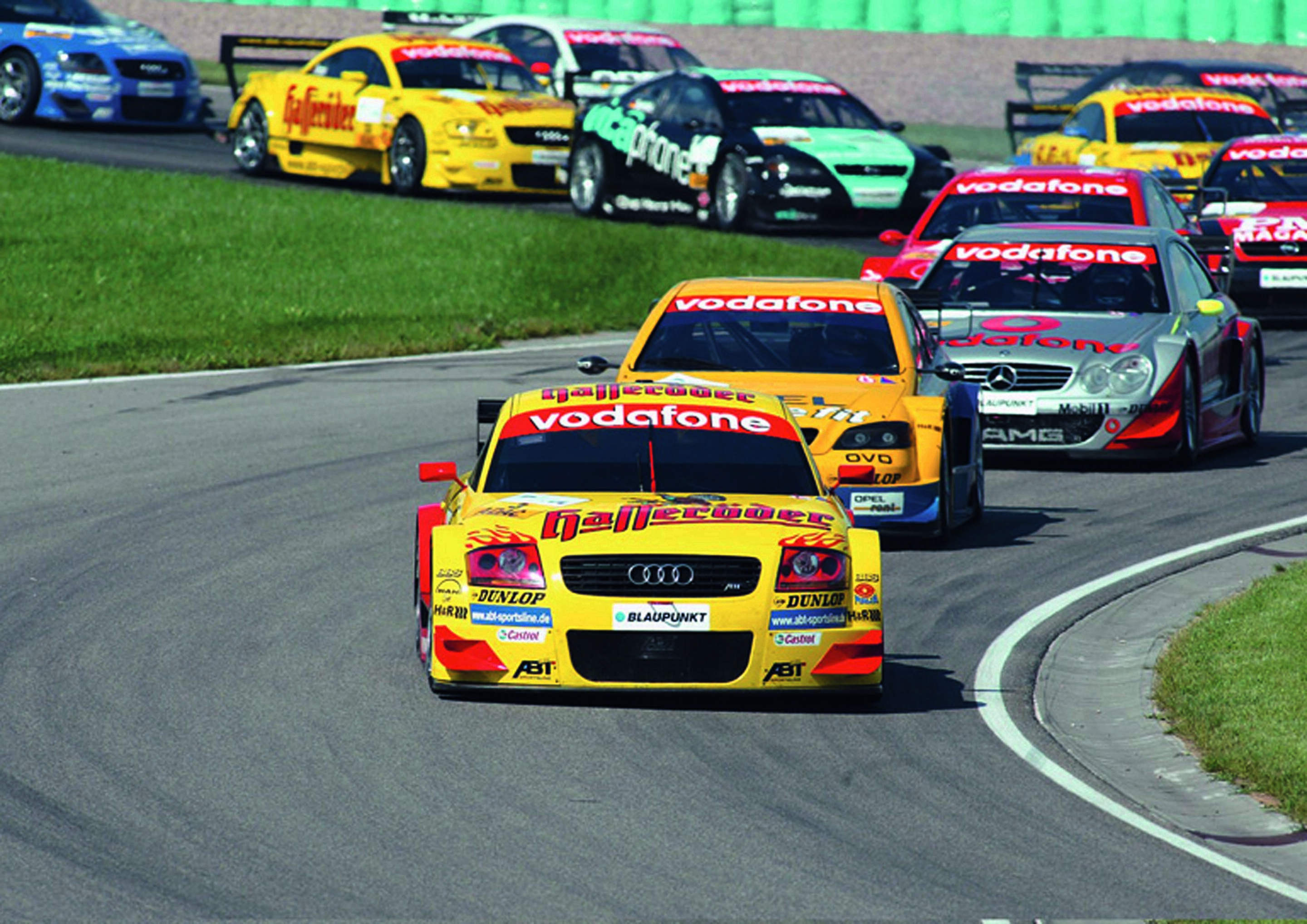Search
All results
(104)
MediaInfos
(42)
News
(1)
Images
(1)
Videos
(1)
Publications
(9)
Technical Details
(2)
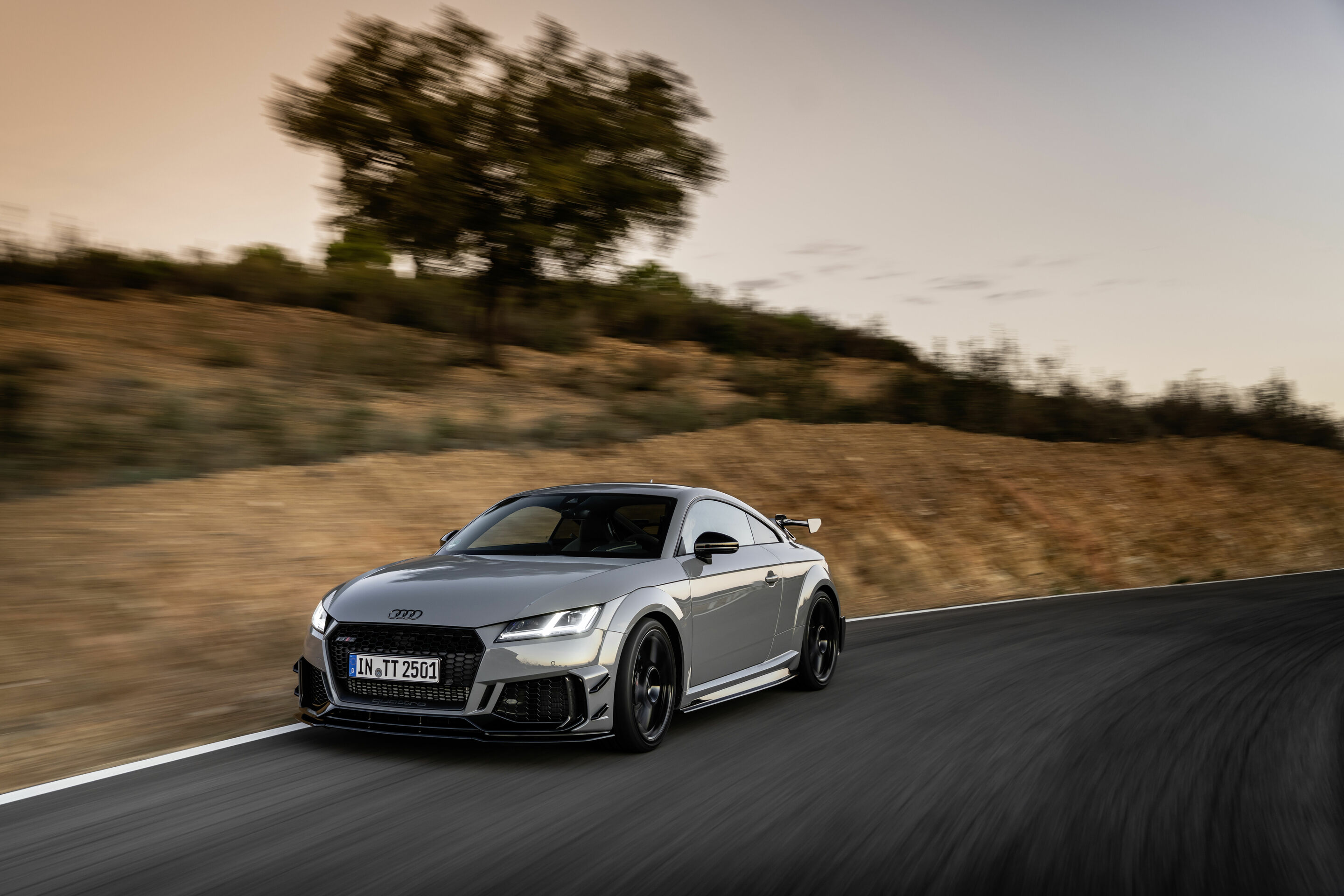
Audi TT (1998-2023)
Looking back at a quarter of a century of TT history. When Audi presented the concept car at the 1995 IAA, the public’s reaction was quick and clear: “This car should be mass-produced – exactly as it is!” With the series debut in 1998, the Audi TT wrote design history and was built as a coupé and roadster over three generations.
Audi TT Coupé
Videos
Engine type Inline 4-cylinder engine
Displacement in cc / bore x stroke in mm / compression 1984 / 82.5 x 92.8 / 9.3
Max. power output in kW (hp) / at rpm 235 (320) / 5600 - 6500
Max. torque in Nm (lb-ft) / at rpm 400 (295.0) / 2000 - 5600
Top speed in km/h (mph) 250 (155.3)
Acceleration, 0-100 km/h (0-62.1 mph) in sec 4.5
Fuel consumption, combined according to WLTP in l/100 km (US mpg) 8.4 - 8.2 (28.0 - 28.7)
CO2 emissions, combined according to WLTP in g/km (g/mi) 190 - 187 (305.8 - 300.9)
Unladen weight without driver / with driver / gross weight limit in kg (lb) 1420 (3130.6) / 1495 (3295.9) / 1815 (4001.4)
*Additional equipment and accessories (attachments, tire size, etc.) may change relevant vehicle parameters, such as weight, rolling resistance and aerodynamics, and, alongside weather and traffic conditions as well as individual driving style, may affect a vehicle’s fuel consumption, CO2 emissions and performance figures. Consumption and emissions values are only available according to WLTP and not according to NEFZ for this vehicle.
 End of an era: Audi and ABT Sportsline’s long track record in the DTM
End of an era: Audi and ABT Sportsline’s long track record in the DTM
A quarter of a century of cooperation in Germany’s number 1 racing series Strong record with five drivers titles, 78 victories and 92 pole positions Long-standing protagonists shaped a trusting relationship
A grand finale to a quarter of a century of extraordinary cooperation: Audi and ABT Sportsline entered the DTM finale at the Hockenheimring for the last time together and kept the title fight exciting right to the end. In the end, Kelvin van der Linde finished second in the standings in the 2024 season after a race win on Saturday. Since May 28, 2000, the team from Germany’s Allgäu region has relied on racing cars with the four rings in exactly 333 DTM competitions. With five drivers titles, 78 victories and many other best performances, the track record of both partners is overwhelming compared to the competition.
“At Audi Sport, we are proud to have celebrated so many successes with ABT Sportsline,” said Rolf Michl, Managing Director of Audi Sport GmbH. “Together we have grown during this long phase and have written a huge piece of motorsport history with many unforgettable successes. This period was also legendary in human terms. A big thank you to Hans-Jürgen Abt, CEO of the ABT Group, Thomas Biermaier, CEO of ABT Sportsline, Head of Sports Marketing Harry Unflath, ABT Motorsport Director Martin Tomczyk and the many other hard-working hands from Kempten who made this era possible.” The journey began with an Abt-Audi TT-R developed in-house in the 2000 season. As early as 2002, Laurent Aiello beat the competition from two manufacturers with the private team’s striking yellow racing car and won the first DTM title for ABT Sportsline. After Audi returned to the prestigious championship in 2004, the team from Kempten was once again in first place. That year, Mattias Ekström celebrated his first championship win in an Audi A4 DTM fielded by Hans-Jürgen Abt’s team.
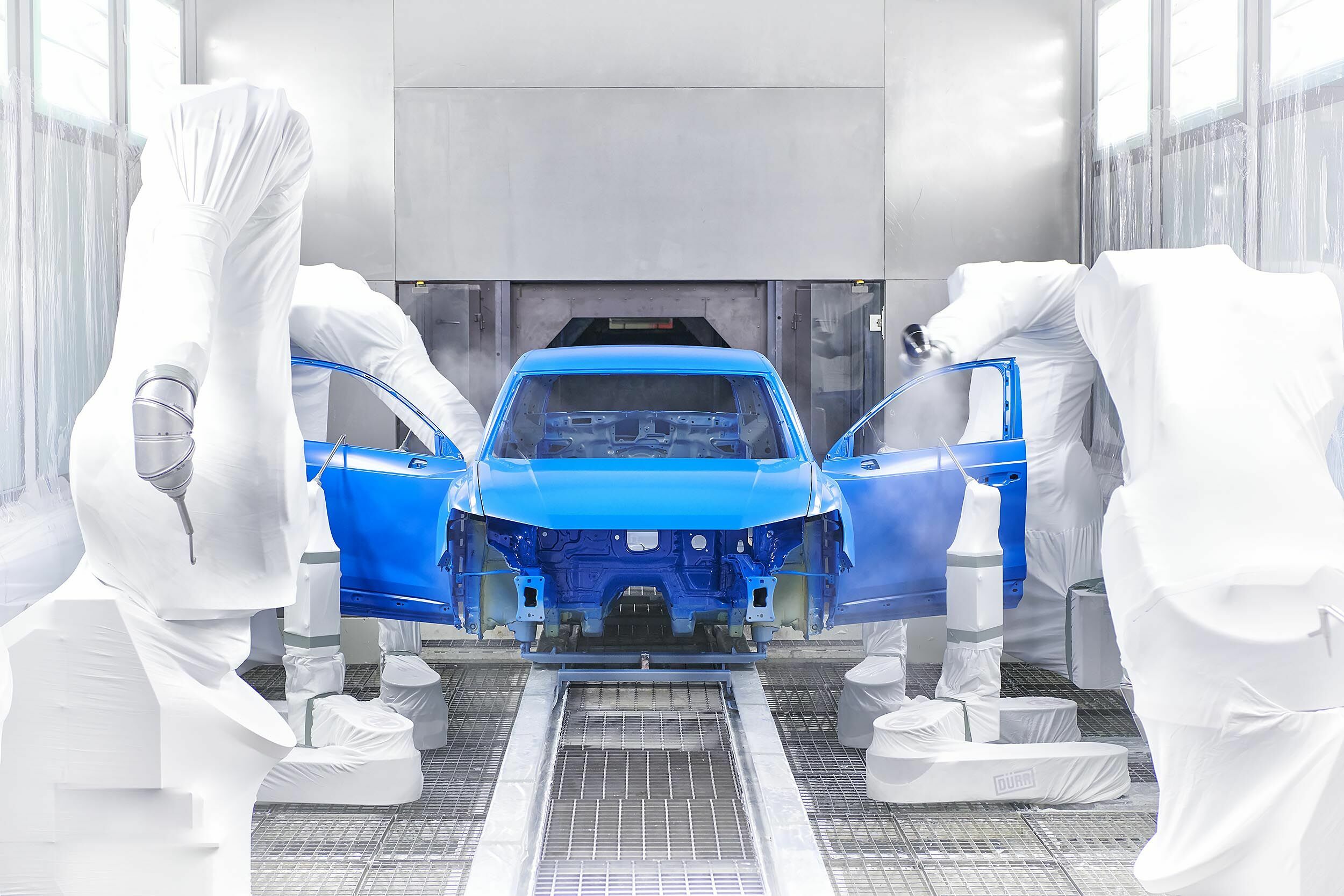 History
History
1993 AUDI HUNGARIA MOTOR Kft. is founded as a 100-percent subsidiary of AUDI AG 1994 Start of four-cylinder engine series production; Official opening of the engine plant 1997 Start of V6 engine series production; Start of V8 engine series production 1998 Establishment of the crankshaft and connecting rod processing line; Start of automobile assembly with the Audi TT Coupé 1999 Start of series assembly of the Audi TT Roadster models 2000 Start of production of diesel engines with pump-nozzle technology 2001 Opening of the Engine Development Center; Assembly of the Audi A3/Audi S3 models begins in Győr, produced until 2003 2005 June 2005: 10 millionth engine from Győr; Audi Hungaria toolmaking goes into operation 2007 Start of production of the Audi A3 Cabriolet; Start of series production of four-cylinder common-rail diesel engines; Start of series production of ten-cylinder biturbo engines 2008 Start of series production of twelve-cylinder TDI engines 2010 Opening of the engine start-up center Start of series production of the Audi RS 3 Sportback 2011 April 2011: Production of the 20 millionth engine from Győr July 2011: Groundbreaking ceremony for plant expansion 2012 May 2012: Topping-out ceremony for the new automobile plan Nov. 2012: Start of production of the new 1.2 and 1.4 liter four-cylinder engines 2013 Audi Hungaria opens its expanded plant in June 2013; series production of the Audi A3 Sedan and the Audi A3 Cabriolet begins at the same time; Sept. 2013: 10,000 employees at the plant; Nov. 2013 Double anniversary: 500,000.
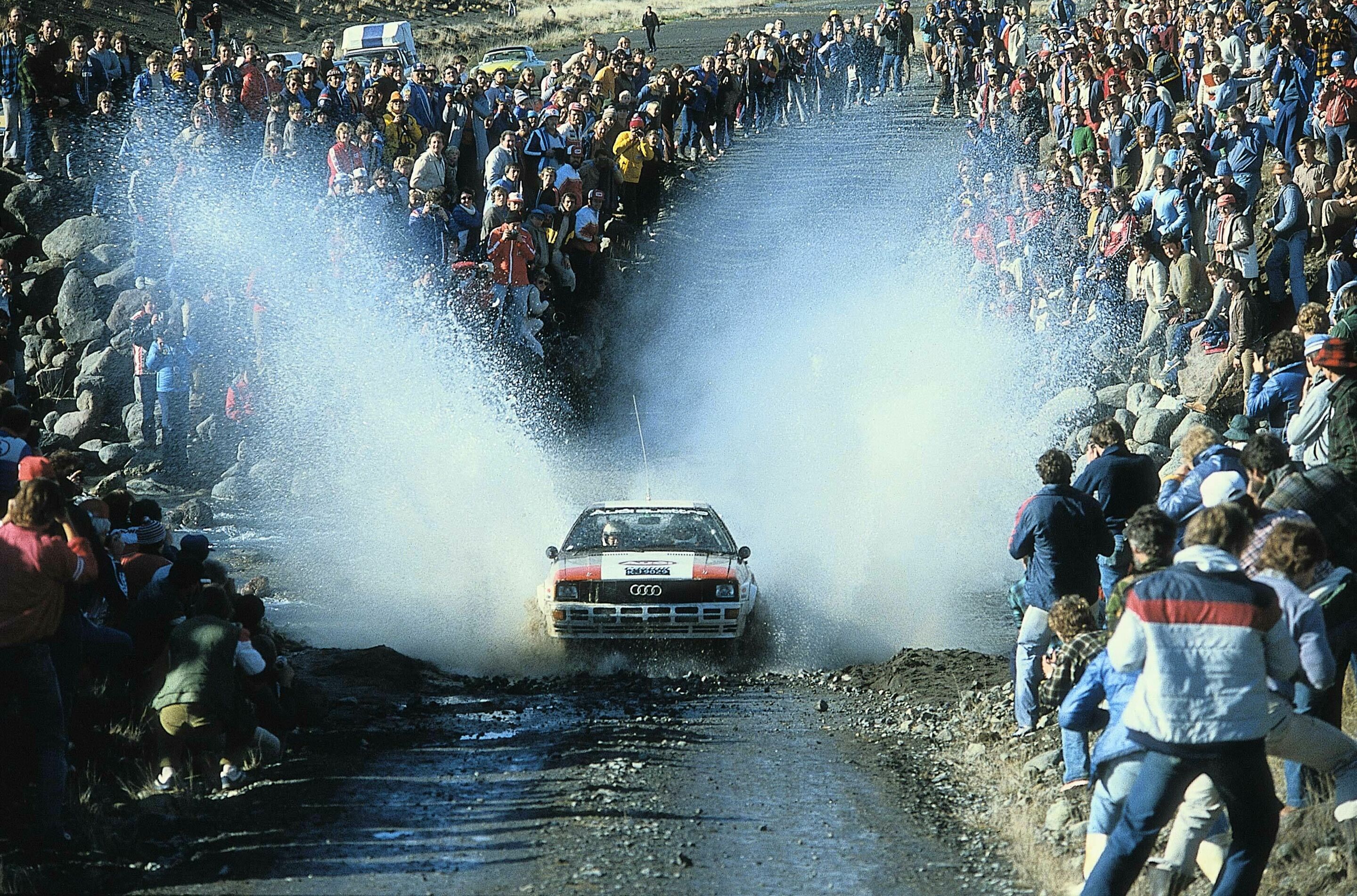 From quattro to e-tron
From quattro to e-tron
The success story of AUDI AG in motorsport Victories and titles since 1981
Audi positions itself as the sportiest manufacturer in the premium segment and has a perfect basis to do so: motorsport. Sportiness, advanced technology and emotive design are the basis for the success of the Audi brand. The genes for this have their origin in racing, since 1980.
The success story began with the Audi quattro Excluding the era before the Second World War that included the legendary Auto Union Grand Prix race cars in the 1930s, the motorsport history of AUDI AG began with the Audi quattro. The dominant victories and two manufacturers’ and two drivers’ titles achieved with the “original quattro” in the World Rally Championship between 1982 and 1984 were an important factor in the market success of the quattro drivetrain. quattro victorious in circuit racing as well After Audi had turned rallying upside down and stormed up Pikes Peak (USA) with the Sport quattro in record time on three successive occasions, Audi also made the quattro drivetrain fit for circuit racing: initially with the Audi 200 quattro and the Audi 90 quattro IMSA GTO in the United States, in 1990 and 1991 with two championship titles for the Audi V8 quattro in the German Touring Car Championship (DTM), and ultimately also with the A4 in the production-based super touring cars. In 1996, the Audi A4 quattro won the championship titles in seven countries. Between 2012 and 2016, the all-wheel drive system returned to the race track as the e-tron quattro. Audi R8 most successful Le Mans sports car in present-day racing After the dominant quattro drivetrain was banned from touring car racing, Audi switched to sports prototypes and also underpinned its slogan “Vorsprung durch Technik” in this motorsport category for 18 years. Audi, on making its debut at Le Mans in 1999, the toughest endurance race in the world, immediately managed the leap onto the podium, finishing third overall.
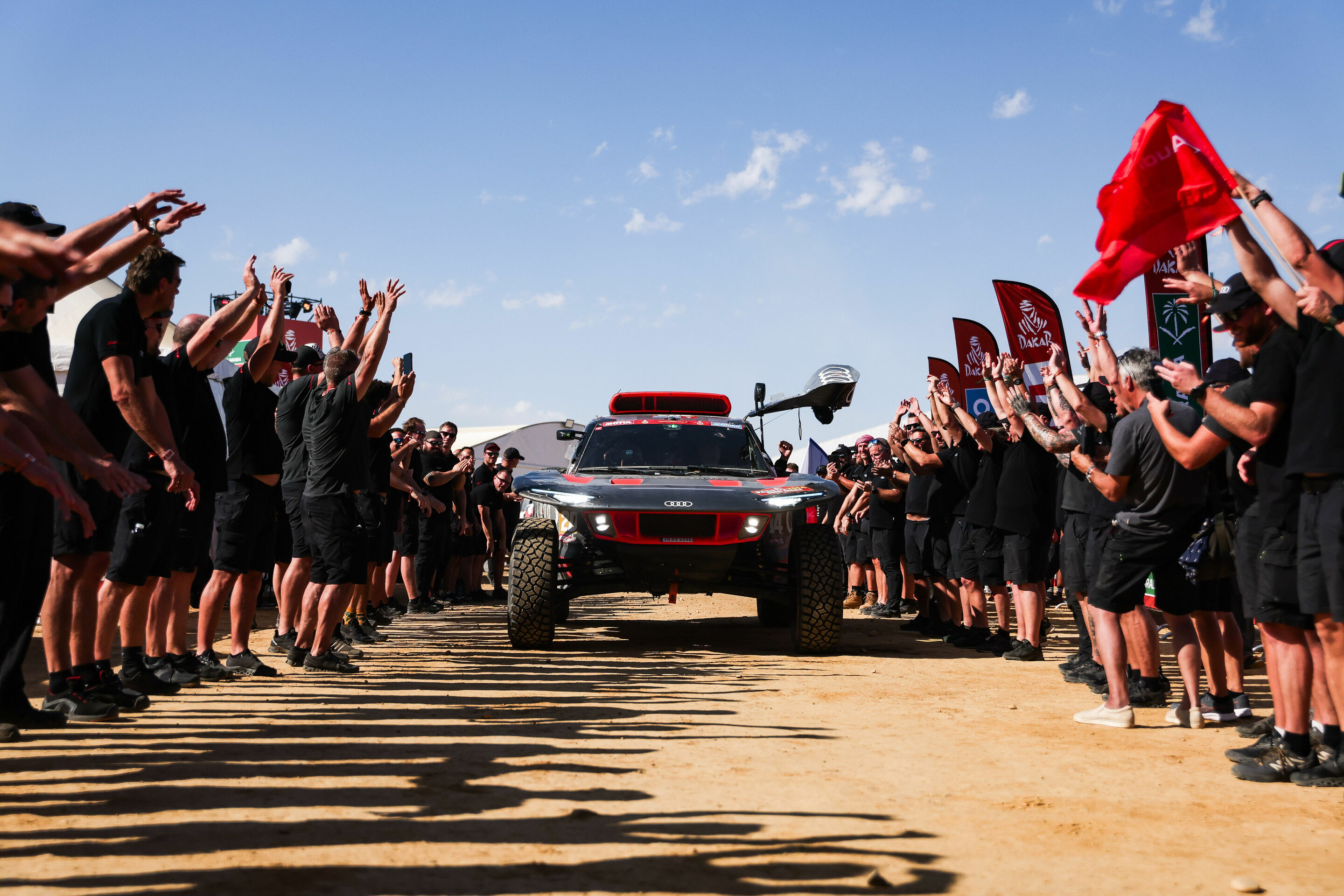 Year by year: The most important successes of Audi in motorsport
Year by year: The most important successes of Audi in motorsport
1981 3 victories in the World Rally Championship (Audi quattro) 1982 Winner manufacturers’ classification World Rally Championship (Audi quattro) 1983 Winner drivers’ classification World Rally Championship (Audi quattro) 1984 Winner drivers’ and manufacturers’ classification World Rally Championship (Audi quattro) 1985 Winner Rally San Remo (Audi Sport quattro S1) Winner Pikes Peak Hillclimb Race (Audi Sport quattro S1) Winner Rally Hong Kong–Beijing (Audi quattro) 1986 Winner Pikes Peak Hillclimb Race (Audi Sport quattro S1) Winner Rally Hong Kong–Beijing (Audi quattro) 1987 Winner Safari Rally (Audi 200 quattro) Winner Pikes Peak Hillclimb Race (Audi Sport quattro S1) 1988 Winner TransAm Series (Audi 200 quattro) 1989 7 victories IMSA GTO Series (Audi 90 quattro) 1990 Winner German Touring Car Championship (Audi V8 quattro) 1991 Winner German Touring Car Championship (Audi V8 quattro) 1993 Winner French Touring Car Championship (Audi 80 quattro) 1994 Winner Italian Touring Car Championship (Audi 80 competition) 1995 Winner Italian Touring Car Championship (Audi A4 quattro) Winner Touring Car World Cup (Audi A4 quattro) 1996 Winner Super Touring Car Championships Australia, Belgium, Germany, Great Britain, Italy, Spain and South Africa (Audi A4 quattro) 1997 Winner Central European Touring Car Championship (Audi A4 quattro) 1999 3rd place Le Mans 24 Hours (Audi R8R) Winner German Super Touring Car Championship (Audi A4 quattro) Winner Swedish Touring Car Championship (Audi A4 quattro) 2000 Winner Le Mans 24 Hours (Audi R8) Winner Sebring 12 Hours (Audi R8) Winner ‘Petit Le Mans’ (Audi R8) Winner American Le Mans Series (Audi R8) 2001 Winner Le Mans 24 Hours (Audi R8) Winner Sebring 12 Hours (Audi R8) Winner ‘Petit Le Mans’ (Audi R8) Winner American Le Mans Series (Audi R8) Winner European Le Mans Series (Audi R8) Winner Speedvision GT (Audi S4 Competition) Winner Swedish Touring Car Championship (Audi A4 quattro) 2002 Winner Le Mans 24 Hours (Audi R8) Winner Sebring
 Biography Mattias Ekström
Biography Mattias Ekström
After a trial year in a side-by-side model, he contested his first Dakar Rally in a car for Team Audi Sport in 2022. As stage winner, ninth overall and best Audi driver, he and co-driver Emil Bergkvist made their mark straight away. He was also the best Audi driver last year in 14th place. One of the things that set Mattias Ekström apart is his professional approach to new challenges and his ability to quickly learn the basics of each new discipline. Whether it was touring car racing in his home country where it all began, the DTM in Germany with the Class 1 touring cars, the Spa 24 Hours in the Audi R8 LMS, the World Rallycross Championship, the Race of Champions or electric racing on the circuit and off-road: within a very short space of time, the now 45-year-old Swede was one of the winners and soon also one of the championship contenders. At the Dakar Rally, he learned that mistakes are part of everyday life and that almost nobody gets through without setbacks. Ekström has experienced more than once in his still young career as a Dakar participant that a stage win can still come at the end of a subjectively unsatisfactory day. Accordingly, he knows how to adapt, minimize risks and also take a step back from time to time. Compared to the reproducible cycles in a circuit race, desert rallies contain countless surprises day after day. Mattias Ekström has learned to adapt to this. And he has another quality that is extremely valuable and that his team can rely on: The racing professional has proven more than once in his outstanding career that he is prepared to subordinate his own ambitions to the goals of a team if necessary.
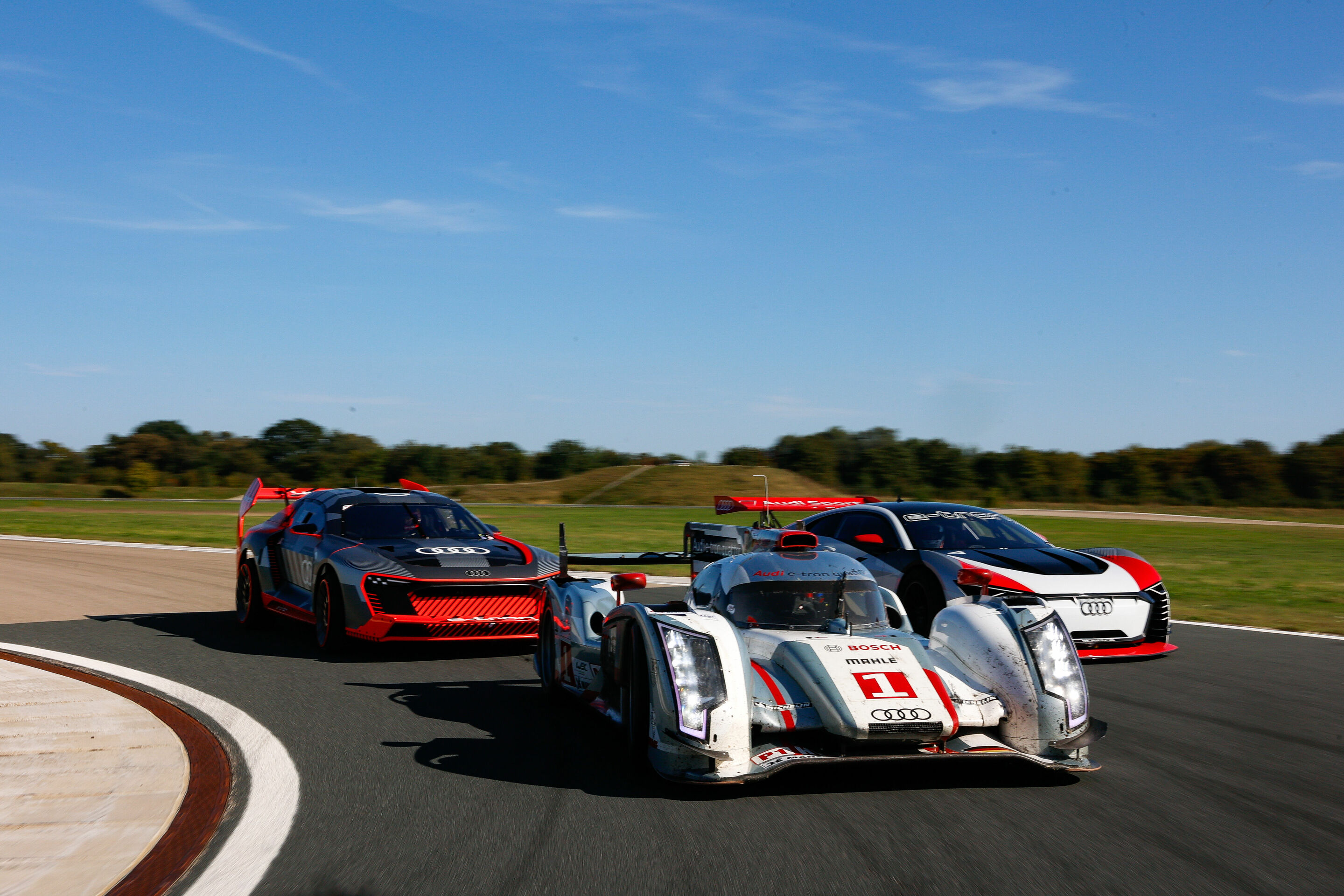 Audi motorsport history: From quattro to e-tron
Audi motorsport history: From quattro to e-tron
Audi positions itself as the sportiest manufacturer in the premium segment and has a perfect basis to do so: motorsport. Sportiness, advanced technology and emotive design are the basis for the success of the Audi brand. The genes for this have their origin in racing, since 1980.
The success story began with the Audi quattro Excluding the era before the Second World War that included the legendary Auto Union Grand Prix race cars in the 1930s, the motorsport history of AUDI AG began with the Audi quattro. The dominant victories and two manufacturers’ and two drivers’ titles achieved with the “original quattro” in the World Rally Championship between 1982 and 1984 were an important factor in the market success of the quattro drivetrain. quattro also victorious in circuit racing After Audi had turned rallying upside down and stormed up Pikes Peak (USA) with the Sport quattro in record time on three successive occasions, Audi also made the quattro drivetrain fit for circuit racing: initially with the Audi 200 quattro and the Audi 90 quattro IMSA GTO in the United States, in 1990 and 1991 with two championship titles for the Audi V8 quattro in the German Touring Car Championship (DTM), and ultimately also with the A4 in the production-based super touring cars. In 1996, the Audi A4 quattro won the championship titles in seven countries. Between 2012 and 2016, the all-wheel drive system returned to the race track as the e-tron quattro. Audi R8 most successful Le Mans sports car in present-day racing After the dominant quattro drivetrain was banned from touring car racing, Audi switched to sports prototypes and also underpinned its slogan “Vorsprung durch Technik” in this motorsport category for 18 years. Audi, on making its debut at Le Mans in 1999, the toughest endurance race in the world, immediately managed the leap onto the podium, finishing third overall. In the following years, the Audi R8 was in a class of its own.
 TTS Coupé TFSI (235 kW)
TTS Coupé TFSI (235 kW)
Program for Germany, Status: 01/13/2023 1/2 Audi TTS Coupé TFSI Engine / electrics Engine type Inline 4-cylinder engine Valve gear / number of valves per cylinder Roller cam follower, continuous intake and exhaust camshaft adjustment, hydraulic valveplay compensation / 2/2 inlet/exhaust valves per cylinder Displacement in cc / bore x stroke in mm / compression 1984 / 82.5 x 92.8 / 9.3 Max. power output in kW (PS) / at rpm 235 (320) / 5600 - 6500 Max. torque in Nm (lb-ft) / at rpm 400 (295.0) / 2000 - 5600 Mixture preparation Direct injection, lambda control, knock control, turbocharger, intercooler Exhaust emission control Catalytic converter, oxygen sensor, gasoline particulate filter Emission standard Euro 6d-ISC-FCM Max. electrical output at 12V in kW 1.6 On-board voltage 1 in volts 12 Drivetrain / transmission Drive type On-demand quattro permanent all-wheel drive with electronically controlled multi-plate clutch Type of rear axle differential Standard Clutch 2 electrohydraulically controlled multi-plate clutches (wet) Transmission type 7-speed S tronic Transmission ratio in 1st/2nd gear 3.190 / 2.750 Transmission ratio in 3rd/4th gear 1.897 / 1.040 Transmission ratio in 5th/6th gear 0.793 / 0.860 Transmission ratio in 7th/8th gear 0.661 / - Reverse gear ratio / final drive ratio 1-2 / 2-3 2.900 / 4.471 / 3.304 Suspension / steering / brakes Type and design of front-axle suspension MacPherson struts, front Type and design of rear-axle suspension 4-link rear axle Tires (basic) 245/40 R 18 Wheels (basic) Cast aluminum flow forming 8.5 J x 18 Steering Electromechanical progressive steering with speed-dependent power assistance Steering ratio 14.6 Turning circle in m (ft) 11 (36.1) Brake system Dual-circuit diagonal-split brake system with ESC/ABS/EBD, brake servo, hydraulic brake assist; Front: aluminum fixed calipers; Rear: floating calipers with integrated electronic parking brake Performance / fuel / acoustics Top speed in km/h (mph) 250 (155.3) Acceleration, 0-100
